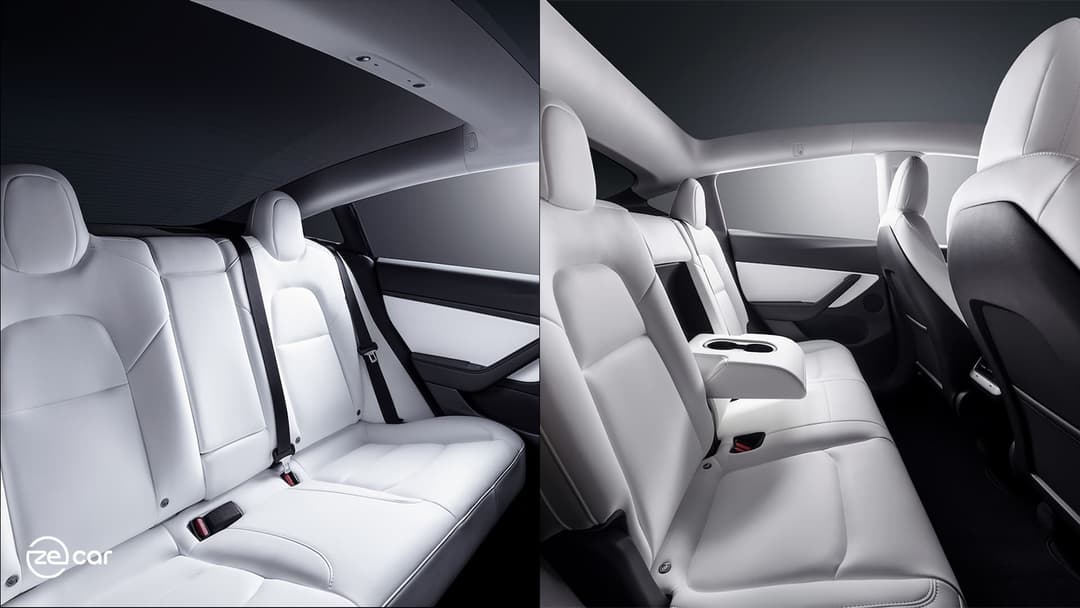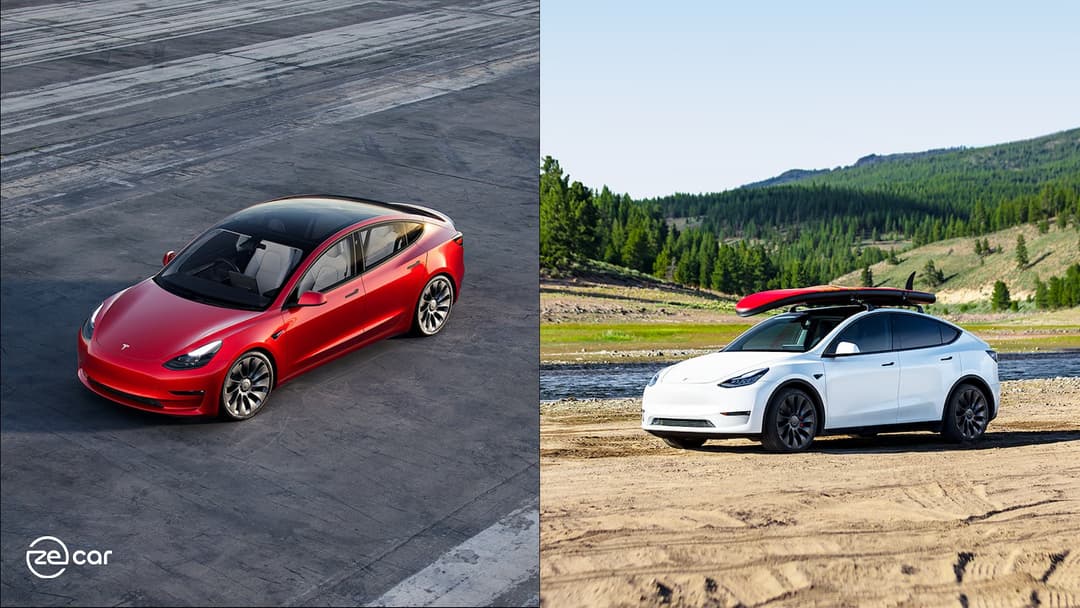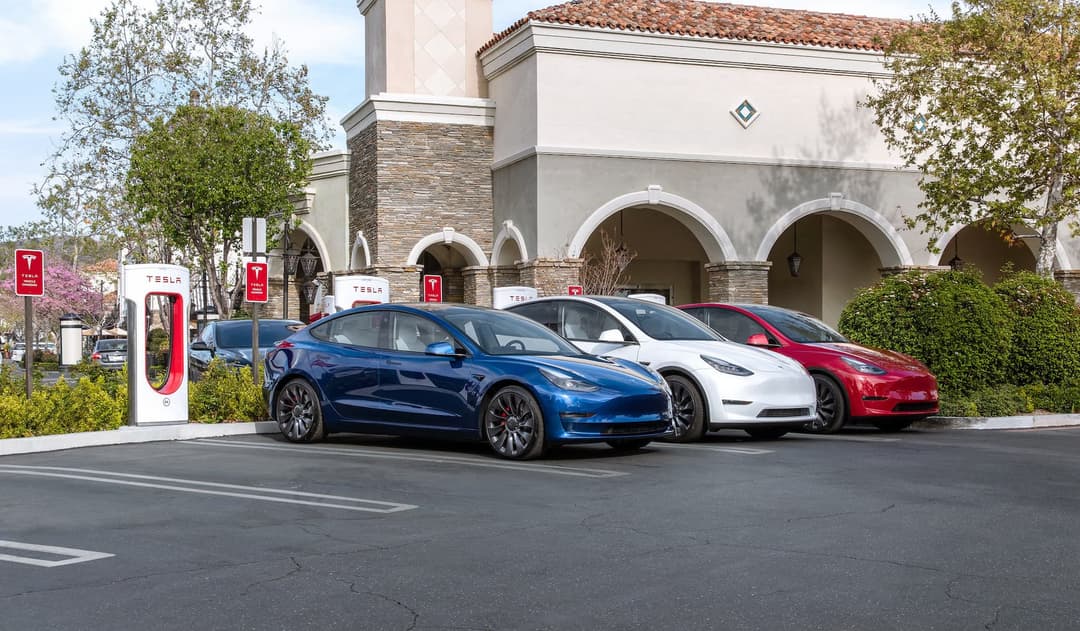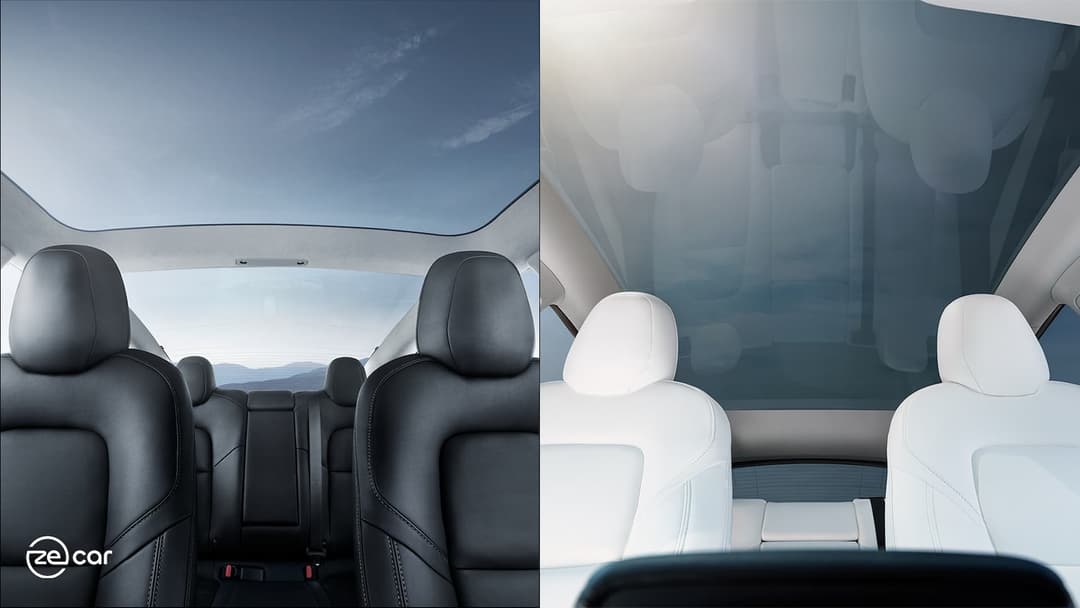
This is a comprehensive comparison of the specs and features of Australia's most popular electric cars, the closely related Tesla Model 3 and Tesla Model Y. Both models shares around 95 per cent of components with eachother. This comparison focuses on the refreshed 2024 Tesla Model 3 'Highland' update and the current Tesla Model Y.
With between $3400 and $6,500 separating the RWD and Long Range variants of each, how much is the Model Y really bigger and different than the Model 3?
EDITOR’S NOTE: As Tesla makes continuous running changes to its vehicles, feature, specification and pricing differences are subject to change. Information is correct as at the time of publication.
Model 3 v Model Y: Pricing
- Model 3 RWD (before on-road costs): $61,900
- Model Y RWD (before on-road costs): $65,400
- Model 3 Long Range (before on-road costs): $71,900
- Model Y Long Range (before on-road costs): $78,400
As per the fledgeling electric carmaker’s simple and streamlined approach, both the Model Y and 3 offer the same exterior paint colour, interior and wheel options for the same cost.
However, there are differences in the standard range RWD wheel styles and size (Model Y is one-inch larger) with Long Range and Performance models featuring the same 21-inch Überturbine wheels.
Both models can also be had with the newly introduced ‘Enhanced Autopilot’ safety assistance suite at $5100 or the ‘Full Self-Driving Capability’ pack (which currently isn’t full autonomous driving) at $10,100.
For an estimated driveaway price and total cost of ownership - use the zecar cost of ownership calculator.
Model 3 v Model Y: Exterior Size
Both models are buil on Tesla's second generation Model 3/Y dedicated EV platform which allows for greater interior space relative to the external footprint.
Overall, the Model Y is 31mm longer and 183mm taller than its Model 3 counterpart. The Model 3 is however 12mm wider.
The Model Y only has a 15mm longer wheelbase to yield a slightly more spacious interior and has a 30mm higher ground clearance.
For context, the Model Y’s 168mm ground clearance is still lower than Australia’s most popular SUV, the Toyota RAV4, at 190mm, yet it still sits higher than the Kia EV6 at 160mm.
Naturally, it’s no surprise the Model Y demands more manoeuvring too, with a 12.1-metre turning circle as opposed to the 3 at 11.6-metres.
Model 3 v Model Y: Interior Size

With slightly bloated dimensions and a 15mm extra wheelbase, the five-seater-only Model Y gains 17mm more head room, 2mm more shoulder room, and 11mm more hip room.
However, it interestingly has 22mm less leg room than the smaller Model 3 sedan. Though, with the Model Y's front seats on raised rails, it allows more space for passenger's toes to sit underneath the seats.
The Model Y SUV does benefit in storage volume, though, with a 293-litre larger boot with all seats in place and a 29-litre bigger frunk. Tesla doesn’t disclose volume with the Model 3’s rear row seats folded down, but the Model Y is rated at 2041-litres.
It’s worth noting that Tesla’s boot figures measure up to the roof, instead of using the more realistic VDA (Verband der Automobilindustrie) blocks standard, which explains its generous number compared to its rivals like the BYD Atto 3, Hyundai Ioniq 5 and Volvo XC40 Recharge.
While the Model 3 has a deep compartment underneath the boot floor, the Model Y adds another separate storage space under the boot, too.
Additionally, the Model Y’s rear row can fold the centre seat individually in a 40/20/40 split and there are two release buttons at the boot to electronically fold it down in a 60/40 split. The 3’s back seats can only manually fold in a 60/40 configuration.
The crossover’s hatchback opening means storing items in and out of the boot will be easier with a more open, wider aperture. Both EVs feature an electric tailgate as standard, but they aren’t ‘handsfree’ automatic; it still requires a button press or the connected Tesla smartphone app to open and close it.
Model 3 v Model Y: Range and Performance

Both Shanghai-made electric cars offer the same battery packs and similar charging capabilities with exclusive access to the Tesla Supercharging network in Australia (for now), but the naturally heavier battery-electric wagon is slower than the small sedan.
As the Model Y RWD is 164kg heavier than the Model 3 RWD, it is less efficient and has 58km less claimed driving range (WLTP). This single-motor variant is also a claimed 0.8 seconds slower in a 0-100km/h sprint than its sedan equivalent with a top speed capped at 217km/h instead of 225km/h (not that this matters in Australia).
Since the Model Y Long Range is 226kg heavier and less efficient than the equivalent Model 3, it has 96km of less claimed range (WLTP). This hi-po dual-motor model is 0.6 seconds slower in the 0-100km/h acceleration than the Model 3 Performance with top speed maxing out at 250km/h instead of 261km/h.
Another key difference is the Model Y is rated to tow up to 1600kg (braked) or 750kg (non-braked) trailers, but the Model 3 is capable of 1000kg (braked) or 750kg (non-braked).
Only the former will be offered with a first-party tow hitch accessory from Tesla Australia in 2023.
Model 3 v Model Y: Battery and Charging

While Tesla doesn't disclose exact battery capacities, it seems the RWD and Long Range and Performance models share the same packs across the Model Y and Model 3.
Entry-level RWD variants house a 57.5kWh (usable) nickel and cobalt-free lithium-iron-phosphate (LFP) battery that can be regularly charged to 100 per cent without degradation concerns.
Meanwhile, Long Range Performance AWD models use a 76kWh (usable) nickel-cobalt-aluminium (NCA) battery that the company recommends charging up to 90 per cent to preserve its health.
Zecar believes the Model Y is capable of receiving faster DC charging speeds with an extra 40kW of power across both variants. This should result in a five- to six-minute saving to get to 80 per cent based on zecar's estimates.
All models can charge at up to 11kW AC.
Calculate your personal charging costs and times for each model using this calculator.
Model 3 v Model Y: Driver Technology
The Model Y and Model 3 offer the same level of driver-assist technology features.
Model 3 v Model Y: Infotainment and Connectivity
The Model Y and 3 both feature Tesla's industry leading infotainment and connectivity systems, highlighted by its sharp 15.0 inch centre screen, snappy user-friendly interface and high quality sound system.
Both models feature the Tesla mobile apps which allow functionalities such as remote lock, pre-heating/cooling and charge monitoring.
Model 3 v Model Y: Other Features

Beyond the numbers, the Model Y and Model 3 also have some features unique to each EV.
Features exclusive to the Tesla Model 3 include:
- 18-inch Aero wheels (standard)
- 19-inch Sport wheels (optional on RWD and Long Range)
Compared to the Model 3, the Tesla Model Y adds:
- 19-inch Gemini wheels (standard)
- 20-inch Induction wheels (optional on RWD and Long Range)
- Plastic cladding on wheel arches, side skirts and rear bumper
- High efficiency particulate air (HEPA) cabin filter
- Fixed single-pane panoramic glass roof (without centre crossbar)
- Double laminated rear window glass
- Ambient interior footwell lighting
- Raised front seat rails
- Adjustable rear row seatbacks
- 40/20/40 split folding rear seats
- Electronic folding rear seats (60/40 split) release via boot buttons
- Tow hitch (optional accessory)
Model 3 v Model Y FAQs
Stay up to date with the latest EV news
- Get the latest news and update
- New EV model releases
- Get money savings-deal





